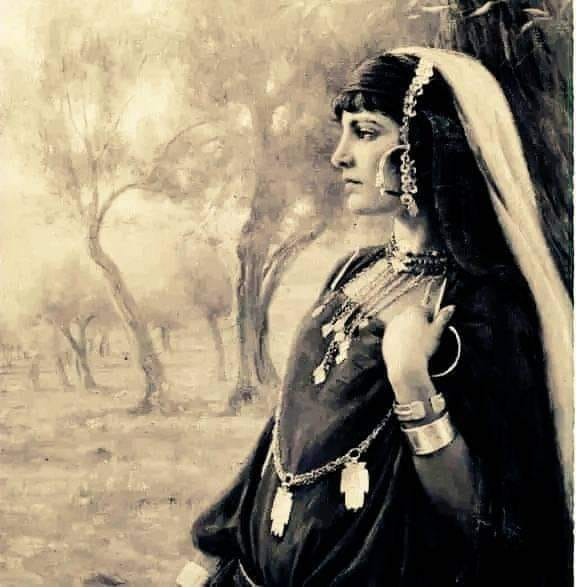The forgotten Eurasian queen

Although the history of the Aures region did not mention her, oral memory immortalized her memory through songs and poems. She is a legend mixed with reality, but her boundaries are vague. Her name is Fatima Tazougart, and she is known as the Red Queen. But, what is her story? Why was it called Tazogurt? What regions did it extend its influence over?
There are few sources that talk about this mysterious queen, and what we know about her life comes to us from stories told mainly by storytellers and poets, who elevated her to the rank of queens dazzling with their courage and beauty.

Although some historians are almost certain that she never existed, Amazigh songs continue to glorify her, this woman who has been transmitted through words through the centuries.
But, who is this woman whom Rehabat Al Shawiya sings about?
The legend dates back to the sixteenth century, during the Ottoman era. Fatima Tazogurt, whose beauty captivated poets, like Queens Dihya and Tinhanan, was at the same time a fierce warrior, a healer, a Sufi governor and a queen who ruled over the northern part of the Aures. Oral tradition gave her the nickname “Tazogurt,” which means “the red-haired one,” because of her shiny hair that glowed in the wind.
Fatima was born in Jebel Hetaouine in Tamerwant, or Marouana, near Batna in the year 1544, and she died in 1641 in the Balzma Mountains. History does not remember how she became queen. Was she a king's wife who inherited the throne after becoming widowed? Or did she inherit her father's kingdom? No one knows...but she is known to have established a matriarchal system under the banner of Islam, and established a council composed exclusively of women, a first in North Africa.
After her rise to power, she succeeded in uniting several Amazigh tribes under one banner, and oral tradition links her to a distinguished lineage of warrior leaders, as she is a descendant of Imurin, one of the leaders who participated with Tariq ibn Ziyad in the conquest of the Iberian Peninsula in 711.

A queen of all contradictions
She was described as having all the contradictions. She was the queen who loved her loyal subjects and was a harsh leader towards anyone who disobeyed her orders and challenged her rule. In order to extend her influence and intimidate her opponents, Fatima did not hesitate to sacrifice her two brothers who challenged her decisions. It is said that she eliminated her brother Sultan, and exiled her younger brother Salam, who objected to some of her decisions.
The scene of her arrival on her horse to the heart of the battlefields was legendary, in the uniform of a heavily armed warrior. The army respected and feared her at the same time, and with its support, she extended her kingdom over the Greater Euras, to the borders of M’sila in the southwest and Tebessa in the northeast.
In 1566, it occupied the cities of Marrakesh, Meknes and Fez, which were under Zayanid control. These facts may be disputed by historians, due to the lack of manuscripts and records, but a famous Moroccan poet, Sidi Abdel Rahman Al Majdoub, who lived in the sixteenth century, immortalized the conquest of these cities in a poem.
The Queen Mother
This warrior queen was the mother of seventeen children. She memorized the Qur’an and recited it by heart. She was also well-versed in folk medicine and treated diseases using wild herbs. She received the secrets of healing from her mother, Advila.
Fatima Tazougart, like the Tuareg queen Tinhanane, remains a character that extends throughout historical story and legend.
Many poems narrate her biography and heroism. These are some of her verses:
“The softness of the moon, the breeze of the mountain, tell the red-haired Fatima to come out and illuminate the silence of the nights.”
And in another poem: “Be silent, O turtledove, the oak, the olive, the cedar, and the pine, and the waterfalls of living waters freeze, atone for their sins in ecstasy, so Tazogart, the queen of the Aures, bathes in bed, enchanted by the tivores.”
Source: websites

